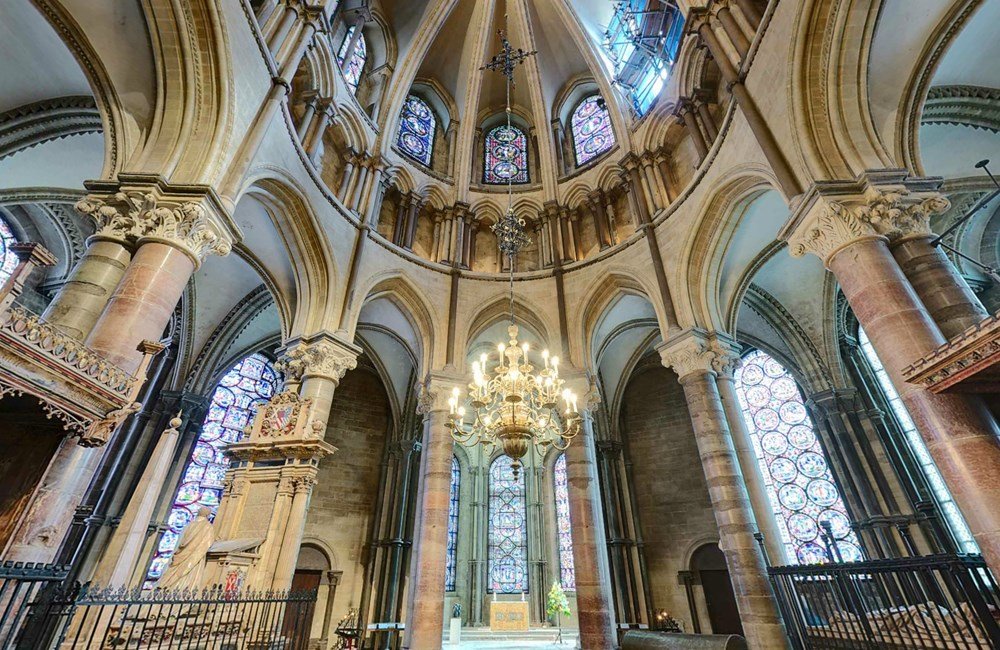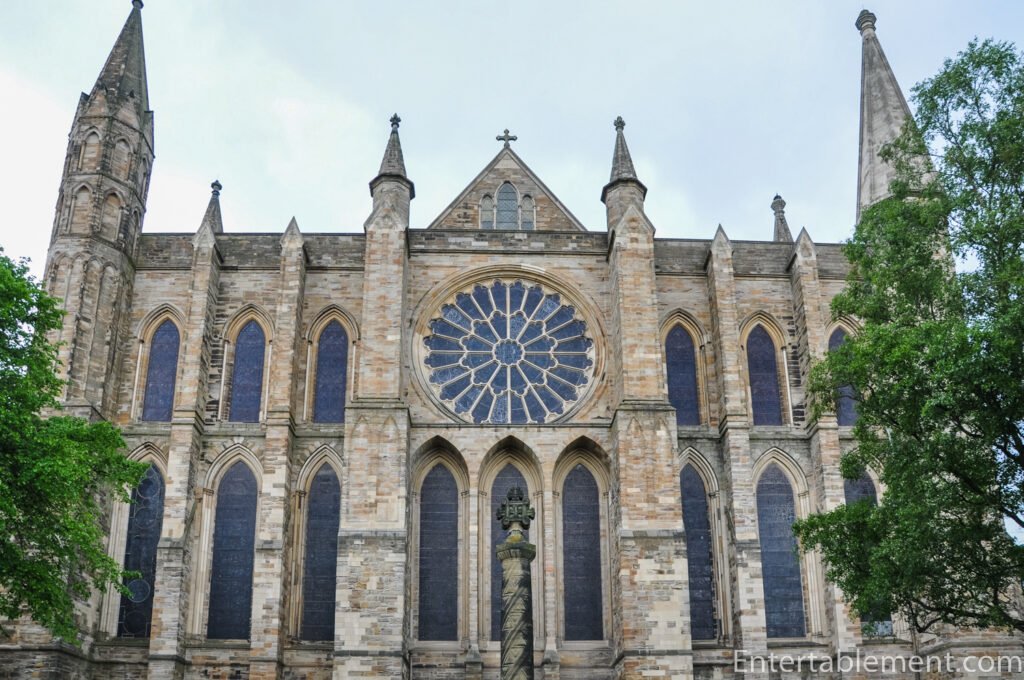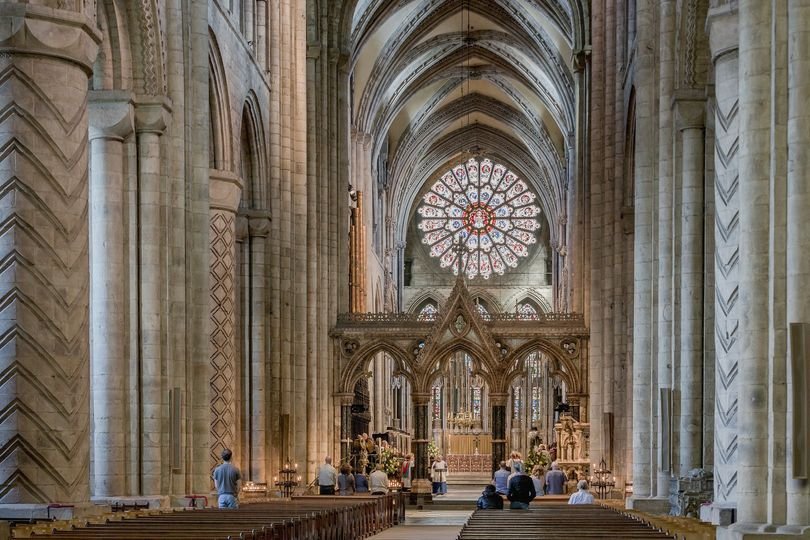Ely Cathedral


Ely Cathedral, Anglican cathedral in Ely. The Romanesque cathedral can trace its origins to the 7th century, though the present building dates only as far back as 1083. It is celebrated for its beauty and its history, and it is a major tourist attraction.
Ely Cathedral is a magnificent structure with a history dating back over 1300 years. Located close to the university city of Cambridge, Ely has an association with many who have shaped history including King Canute, William the Conqueror, Hereward the Wake, Henry III, Edward III, Queen Phillipa and Oliver Cromwell.
Canterbury Cathedral


Canterbury Cathedral, founded in 597, is England’s oldest Cathedral, home to the symbolic leader of the Anglican Communion and the Church of England, the Archbishop of Canterbury.
The cathedral is in Canterbury, Kent. It is a UNESCO World Heritage Site and also one of the greatest examples of mediaeval Norman architecture in Britain.
York Minster


York’s cathedral church is one of the finest medieval buildings in Europe. The Minster is also known as St Peter’s, its full name being the ‘Cathedral and Metropolitical Church of St Peter in York’. In the past the church sat within its own walled precinct, known as the Liberty of St Peter.
Dating back to the 12th century, York Minster holds the record for the number of medieval stained glass in the UK, with 128 pieces. From the poignant Five Sisters window to the grand Great East Window, these are sights to behold when visiting York Minster.
Paul’s Cathedral in London


St. Cathedral Paul’s is one of London’s most famous churches. St. Cathedral Paul’s is a building where you can immerse yourself in history and learn about the cathedral and its role in the city. The famous dome of the cathedral can be seen from many places in the city and forms an important part of the Thames skyline. The cathedral was the site of important nationwide events, including peace services, prestigious funerals and royal weddings.
Paul’s Cathedral was built in 604 by Mellitus, Bishop of London, but was destroyed by fire in 1087. Then the new cathedral was rebuilt for a long time until it was finally completed in 1710.
Norwich Cathedral


The most complete Norman Cathedral in England and one of the finest examples of Romanesque architecture in Europe.
Founded in 1096, Norwich Cathedral has welcomed visitors and pilgrims for over 900 and continues to adopting its founding principles offering a welcoming place to all who visit. The Cathedral boasts the highest Norman tower and largest monastic cloister in England and is home to a renowned and famous collection of over 1,000 medieval roof carvings and a selection of original Norman wall paintings.
Wells Cathedral – Cathedral Church of St Andrew


Wells Cathedral has unique features that separate it from other English cathedrals including its iconic West Front and the beautiful ‘scissor arches’ supporting the central tower, as well as one of the largest collections of historic stained glass in the country. The Cathedral also boasts the famous Wells Clock.
Built between 1175 and 1490 Wells Cathedral has been described as “the most poetic of the English Cathedrals”. Set in the medieval heart of England’s smallest city, and an easy drive from Bristol, Bath and Cardiff, Wells is the earliest English Cathedral to be built in the Gothic style.
Cathedral Church of St Peter, St Paul, and St Andrew, Peterborough


Peterborough Cathedral is one of the finest Norman cathedrals in England. Founded as a monastic community in 654 AD, it became one of the most significant medieval abbeys in the country, the burial place of two queens and the scene of Civil War upheavals.
Peterborough Cathedral, properly the Cathedral Church of St Peter, St Paul and St Andrew – also known as Saint Peter’s Cathedral in the United Kingdom – is the seat of the Bishop of Peterborough, dedicated to Saint Peter, Saint Paul and Saint Andrew, whose statues is the three high gables of the famous West Front.
Cathedral Durham – St Cuthbert


Durham Cathedral is the final building of the Anglo-Norman Romanesque style and a magnificent monument to the country’s ecclesiastical history. The solidity of Durham Cathedral says it all. Its mighty columns and steep stone walls are partly a tribute to God and partly a defense of his most sacred treasures.
Durham Castle and Cathedral is one of the most famous and popular tourist attractions. The cathedral was a filming location for Hogwarts in 2001’s Harry Potter and the Sorcerer’s Stone. Construction was built at the turn of the 11th and 12th centuries to house the relics of Saint. Cuthbert and the Venerable Bede.
Bristol Cathedral


Situated on College Green, close to the floating harbour, it is one of the finest examples of a ‘hall church’ in the world. The cathedral often hosts concerts, and if you visit on a Tuesday lunchtime during term time, you may be greeted by the beautiful sound of an organ or choir recital. To fully learn about its history, it is worth taking a guided tour of the cathedral.
Church of England cathedral located in Bristol, England. It was founded in 1140 and consecrated in 1148.
Lincoln Cathedral


Lincoln Cathedral is one of the most spectacular Gothic buildings. Cathedral sits on a escarpment, dominating the landscape and visible from miles away. The extensive church has a Norman core and was decorated in early English Gothic during the renovation by St. Hugh of Lincoln in the late 12th century.
Visitors can take guided tours of the floor and also choose from specialty tours, including historic graffiti, stained glass and rooftop tours.
